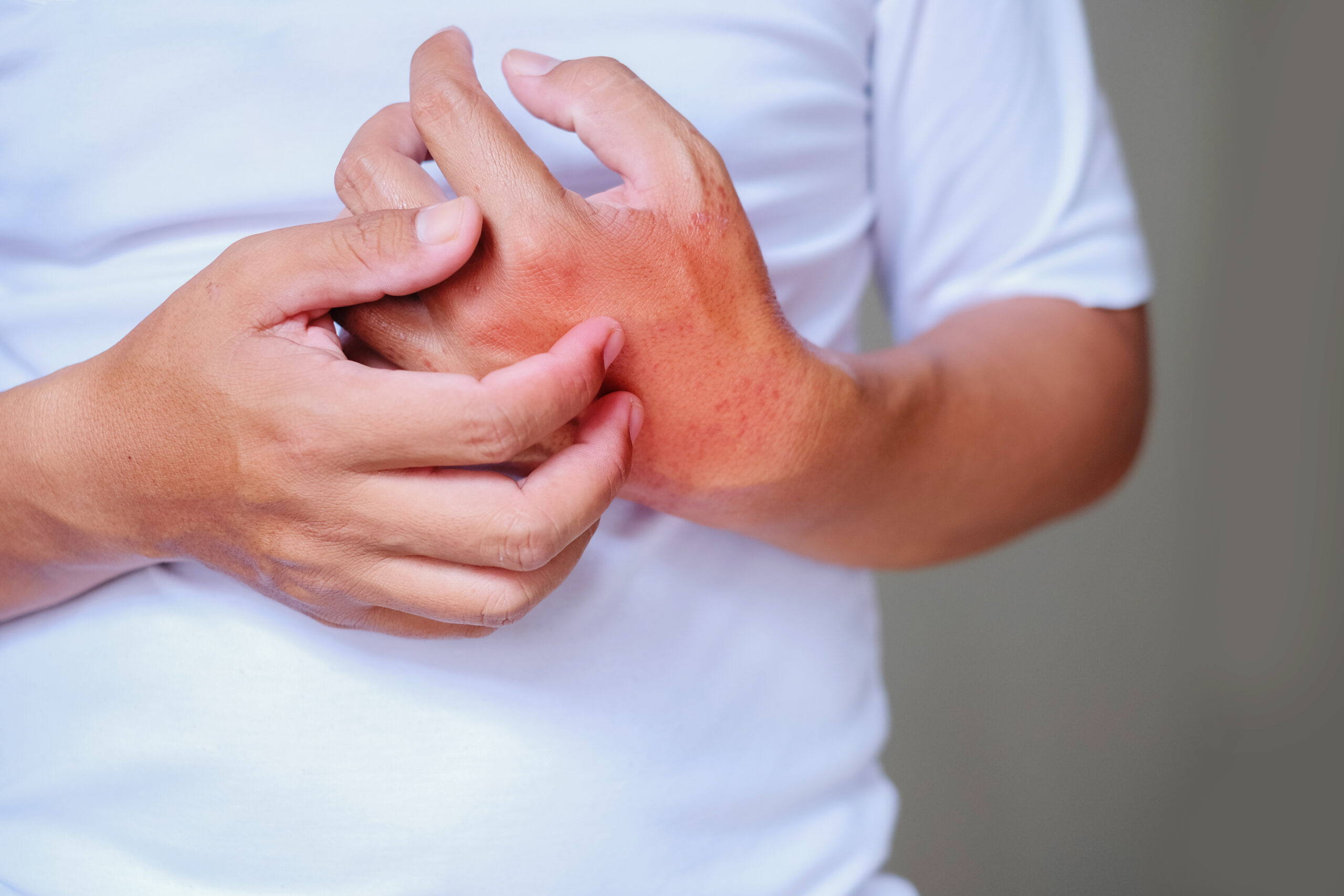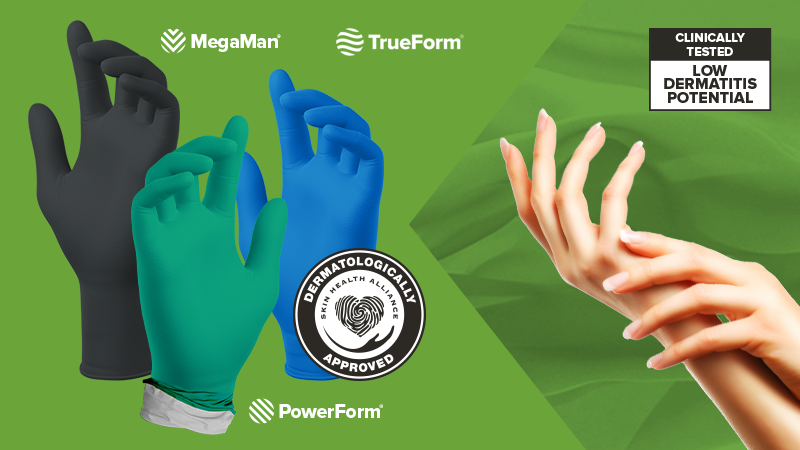Glove Intelligent Assistant
03.14.2023

While some may not be aware of this common issue, there can be allergic reactions or contact dermatitis (skin irritation) potential from wearing gloves. Allergic reactions or contact dermatitis can be induced by the glove materials from the manufacturing process of the glove. Which materials can induce these allergic reactions and what kind of allergic reactions arise from them?
The main material that the general population is allergic to is latex. The allergy stems from latex proteins. Their immune system labels latex as a toxic foreign substance when it comes into contact with their body. While only 1% of the entire human population is allergic to latex, anyone can develop an allergy at any time. It can also be developed after repeated surgeries or having repeated contact with latex. Some of the most common symptoms include hives and itching, along with swelling of lips, eyes, throat and tongue. In severe cases people may go into anaphylactic shock. Many healthcare workers experience a non-allergic reaction caused by wearing latex gloves, caused by frequent hand washing, sweating, and skin irritation from powdered gloves as well. Those symptoms include dryness, itchiness, skin redness, rash, and skin cracking on the hands. Due to latex proteins being a common allergic agent, the FDA banned the usage of powdered latex exam gloves in 2016, citing evidence that such gloves presented substantial dangers to patients, such as airway and wound irritation, post-surgical adhesions, and allergic responses. There has been research and studies that reveal that any glove powder on medical gloves might exacerbate foreign body responses, promote infections, and function as a carrier of natural latex allergens. The most popular lubricant for patient examination gloves is cornstarch, which is an absorbable dusting powder that can spread latex proteins. The FDA specifically states that it will prohibit the sale, distribution, and manufacture of all powdered surgeon’s gloves, powdered patient examination gloves, and absorbable powder used to lubricate surgeon’s gloves.

Gloves made of nitrile or neoprene do not contain latex proteins. However, they can still cause allergic reactions and contact dermatitis. The allergic reactions that people get using nitrile or neoprene gloves come from the chemicals added in the manufacturing process. The allergic reactions tend to be milder and non life threatening. Usually, they will appear as contact dermatitis caused by an allergic reaction to the rubber accelerators; the most common accelerant people are allergic to is thiuram.
For more context, the differences in these allergic reactions are often categorized as type I or type IV hypersensitivity reactions. Type I hypersensitivity would describe a more severe reaction when the body encounters an antigen, as in the presence of latex proteins. There is an exaggerated response from the immune system and can lead to anaphylactic shock. Type IV hypersensitivity results in a reaction in the epidermis layer as a response from a form of contact with the allergen. In the glove industry, manufacturers use harsh chemicals during the manufacturing process of gloves, which can be caustic agents for the epidermis upon contact. The inflammatory immune response will show itself as dermatitis, otherwise known as a skin irritation. While it is a less severe form of allergic reaction, it can still hinder consumers from performing day to day routines.

How does one avoid these allergies? An easy solution is to abstain from latex gloves and only purchase or use high quality gloves with low dermatitis potential claims. SW gloves are Skin Health Alliance (SHA) approved, which is a third body verification of the low dermatitis potential of SW products. It is the world’s leading skin health accreditation entity and aims to promote products that meet the highest scientific standards of skin safety. They have accredited companies from the likes of Venus, Tide, Pampers, and Olay. SW was also the first glove manufacturer in the industry to carry the globally recognized SHA symbol, a sign that we always value showing our consumers that our products are manufactured for the utmost hand safety. Our company believes in reducing the reliance of hazardous substances in our manufacturing process. SW is actively seeking ways to reduce the use of volatile organic compounds deemed risky to the environment. Preventing chemical pollution and minimizing the amount of chemicals in our products is a top priority. This adds to our low dermatitis potential claim as SW aims to reduce the amount of harsh chemicals used, which can lead to type IV hypersensitivity or skin irritation.